The exotic garden at Great Dixter caused shockwaves in the horticultural community when it was first planted – but how do you create a feeling of the exotic in East Sussex?
Head gardener and chief executive of Great Dixter Fergus Garrett picks 30 of the most beautiful exotic plants he chose for the exotic garden at Great Dixter. These include tropical plants, but also plants that give an atmosphere of the exotic.
Here's more from Fergus on how to create an exotic garden.
Jump to
- How to protect exotic plants in winter
- 30 exotic plants to grow in your garden
- Exotic plants with bold leaves
- Exotic plants with ferny or filigree textures
- Quirky and unusual shaped exotic plants
- Where to see exotic plants
- Where to buy exotic plants
30 exotic plants to grow in your garden
Exotic plants with bold leaves
Colocasia esculenta
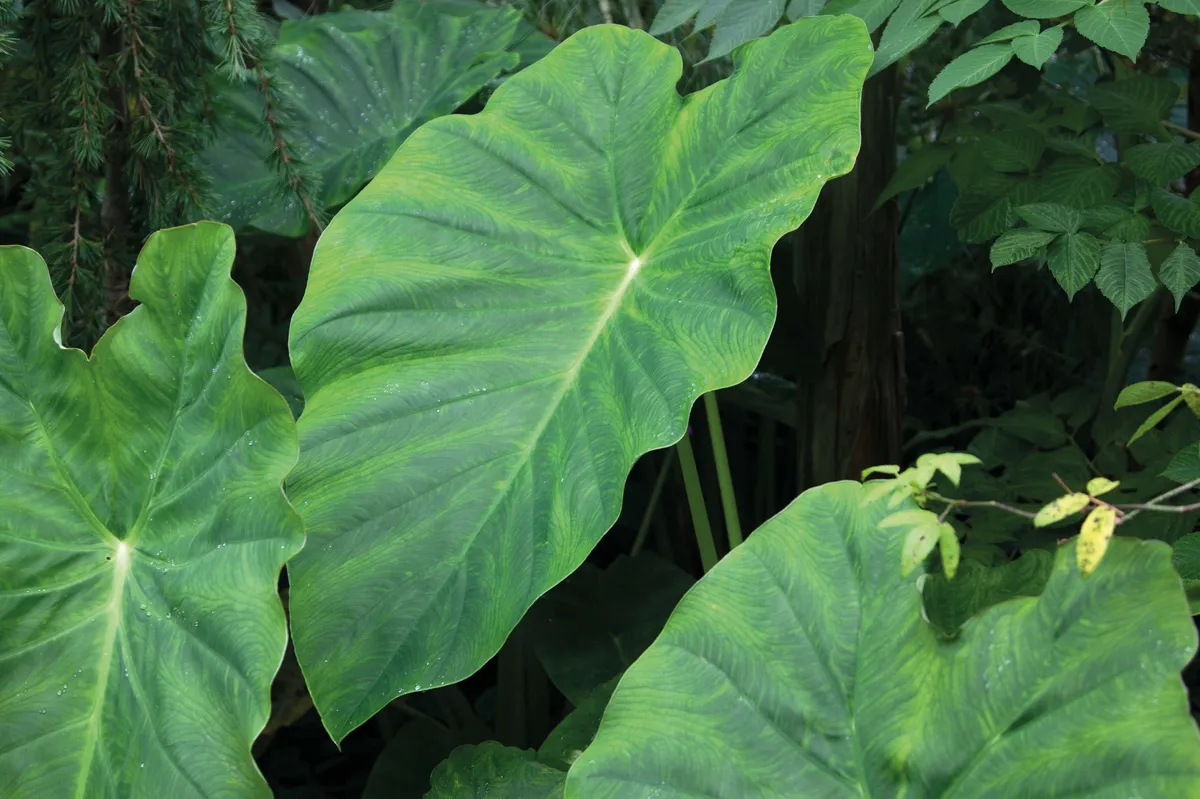
Colocasia esculenta, or taro, is a tropical plant that is mainly grown for its edible corm in many parts of the world. It is also grown in gardens for its spectacular, heart-shaped leaves that have complex interveinal mottling of varying tones and hang from arching, thick and fleshy stems. Colocasia esculenta is tender, so it can be grown outdoors in the summer, but will need to be brought indoors and grown as a house plant for the rest of the year. While it is evergreen in its native habitat, its foliage may die back if temperatures go below 21°C.
Needs sun or part shade; it is often grown from a corm. 1.5m. AGM. RHS H1A, USDA 8a-10b.
Solanum betaceum
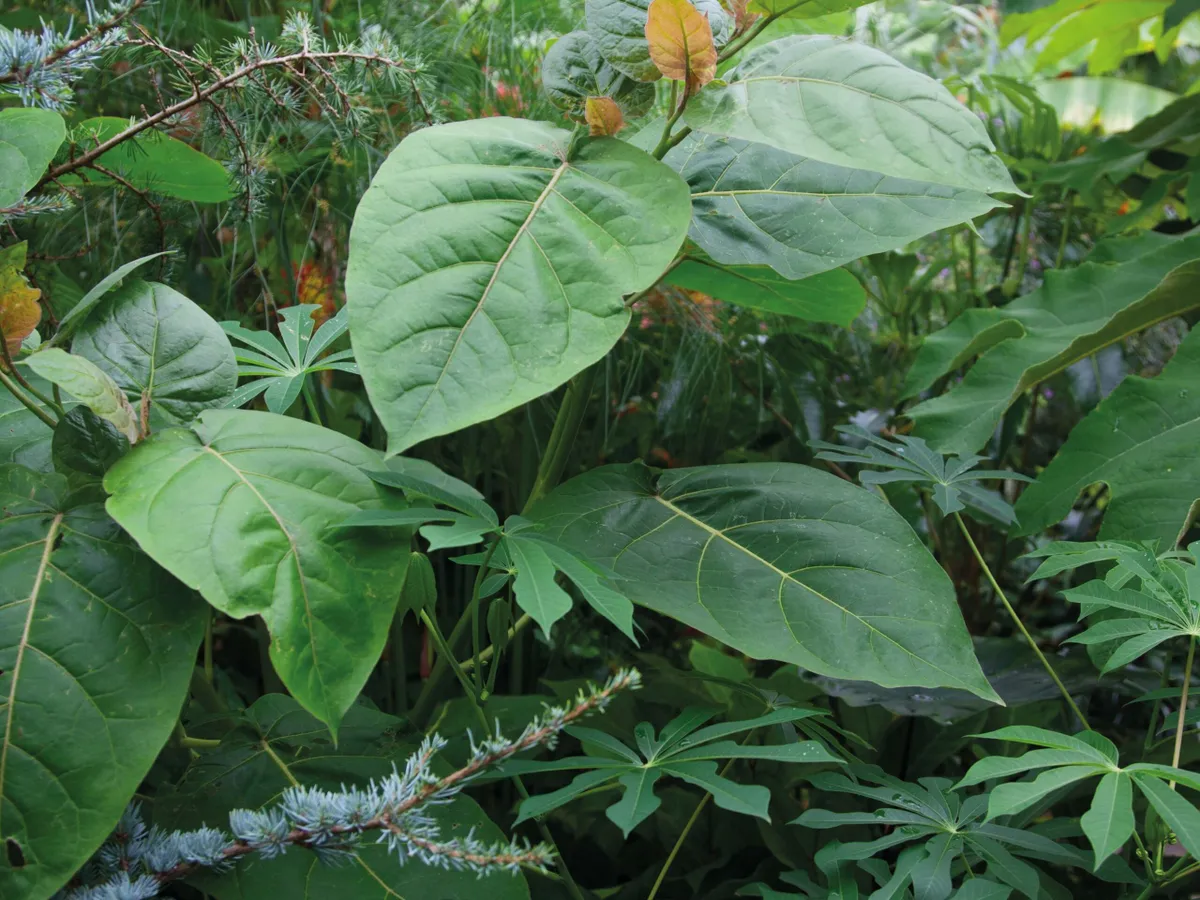
Solanum betaceum, better known as the tamarillo or tree tomato, hails from South America and is widely grown for its edible, crimson fruits. These are more like plums than tomatoes, and have a sweeter taste. A tamarillo will eventually grow into a perennial, woody tree. The fruits are not like tomatoes but more like plums. It is easy to grow from seed, and grows rapidly, making a sturdy plant in its second year; it can eventually reach around 2m tall. It is happy in sun or part shade. Protect from frosts or bring indoors in winter. 3m. USDA 10a-11.
Colocasia esculenta ‘Fontanesii’
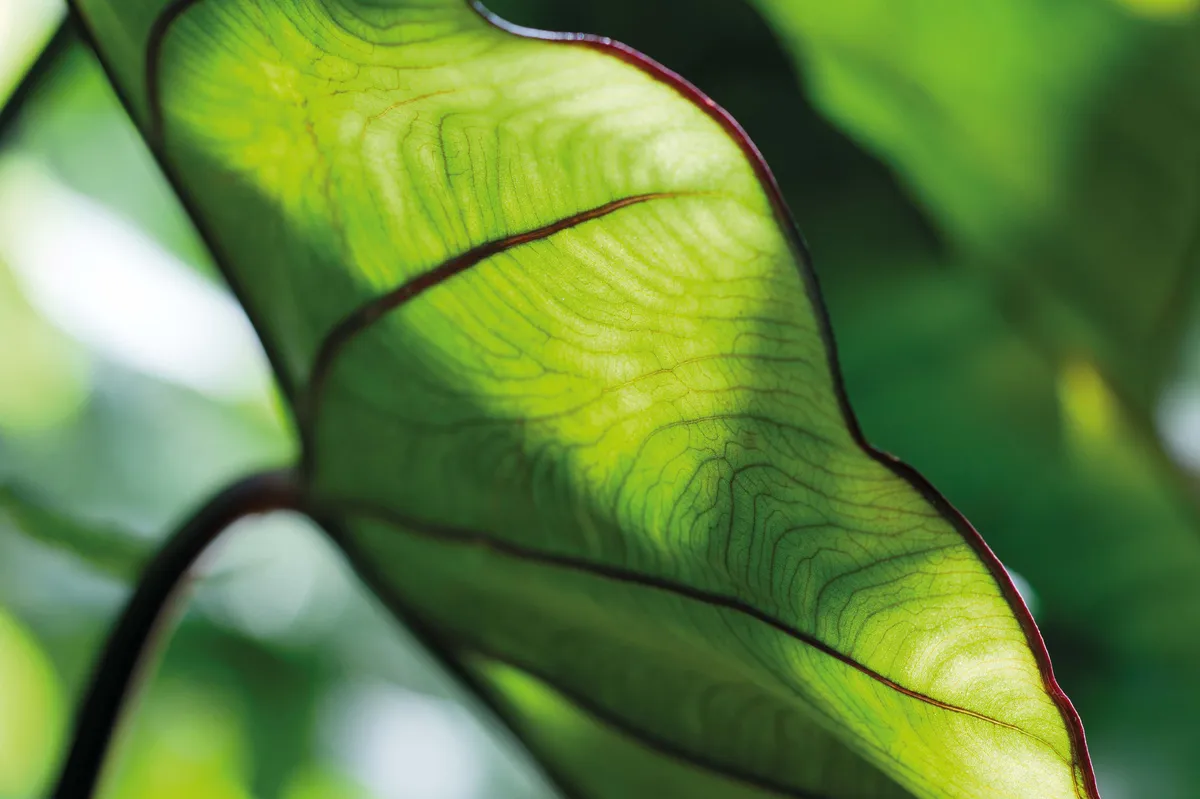
Long, arching, jet-black stems support elongated, dark-green leaves subtly marbled in an oily glaze and beautifully intersected with dark veins radiating out from a central point. Sun or part shade. 1m. USDA 9a-12.
Tetrapanax papyrifer ‘Rex’
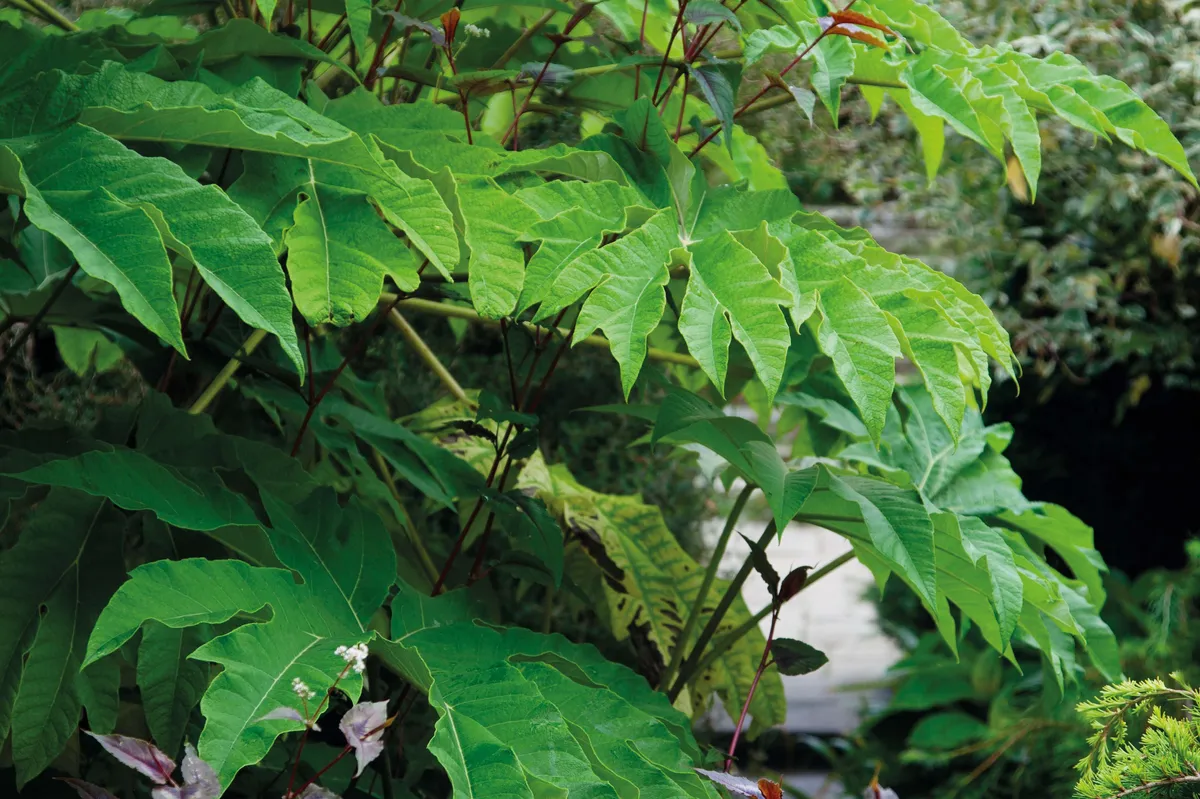
Deeply lobed, palmate foliage is held flat, radiating out from stiff, wooden, suckering stems. Loose panicles of white flowers in October are followed by black fruit. Sun or part shade. 3m. RHS H4, USDA 6a-10b.
Buy Tetrapanax papyrifer 'Rex' from Crocus
Farfugium japonicum var. giganteum
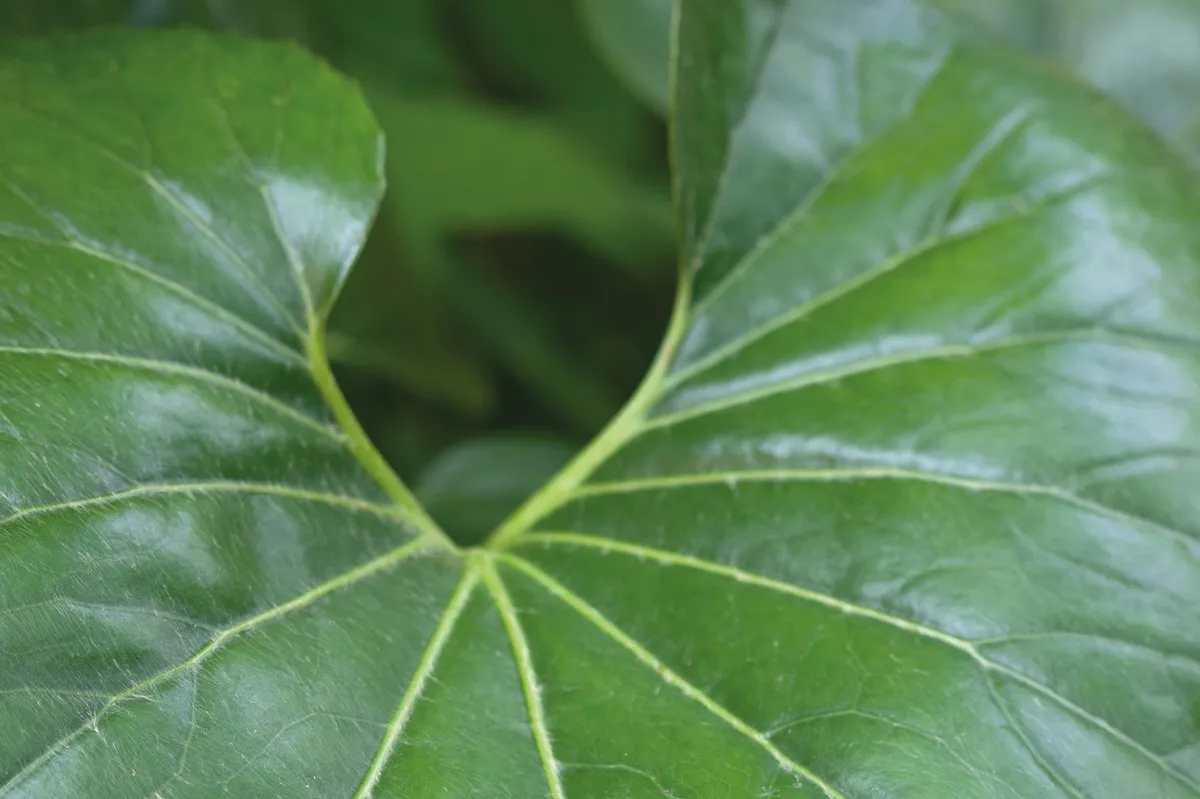
With highly glossed, deep-green, kidney-shaped leaves, this makes a great contrast to ferns. Native of moist areas in eastern Asia. 50cm. USDA 7a-10b.
Begonia ‘Burle Marx’
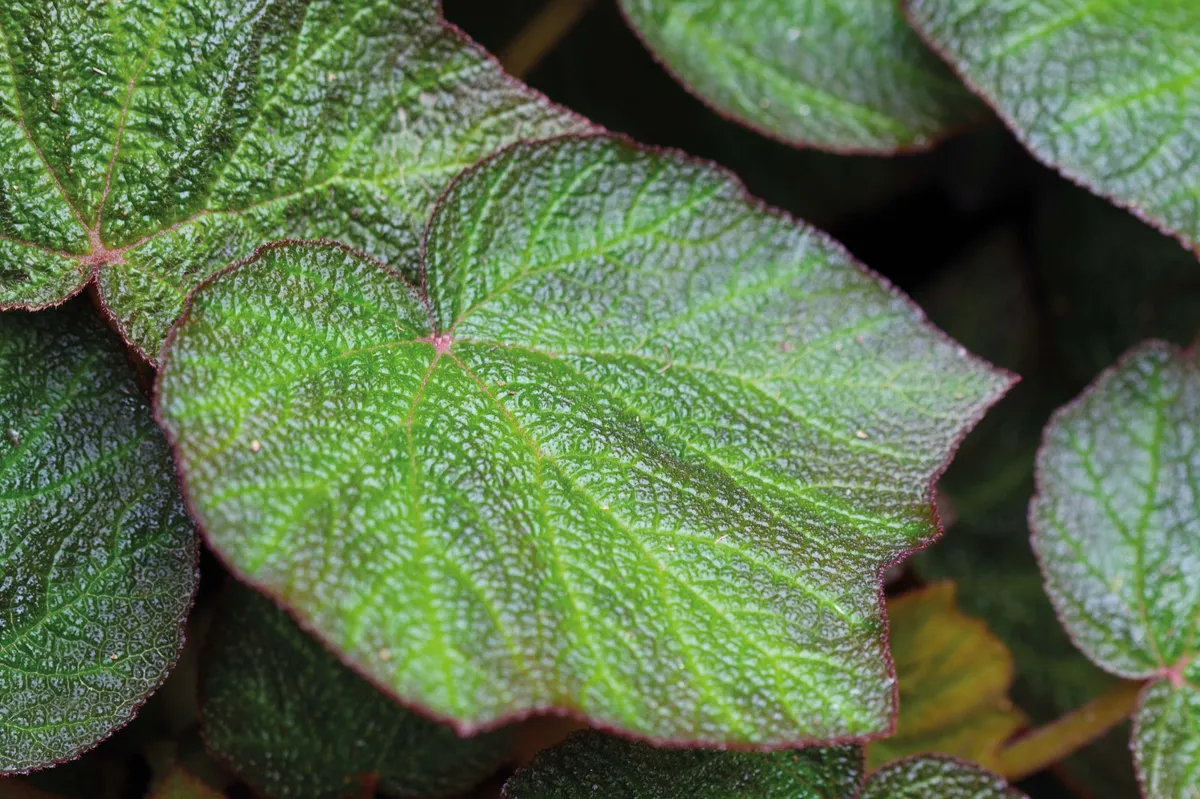
An oddball begonia with kidney-shaped, palmate, lobed leaves, highlighted in rusty red. These leaves are glossy, with an attractive warty texture. Needs shade. 50cm. AGM. RHS H1B, USDA 10b-11.
Colocasia esculenta ‘Illustris’
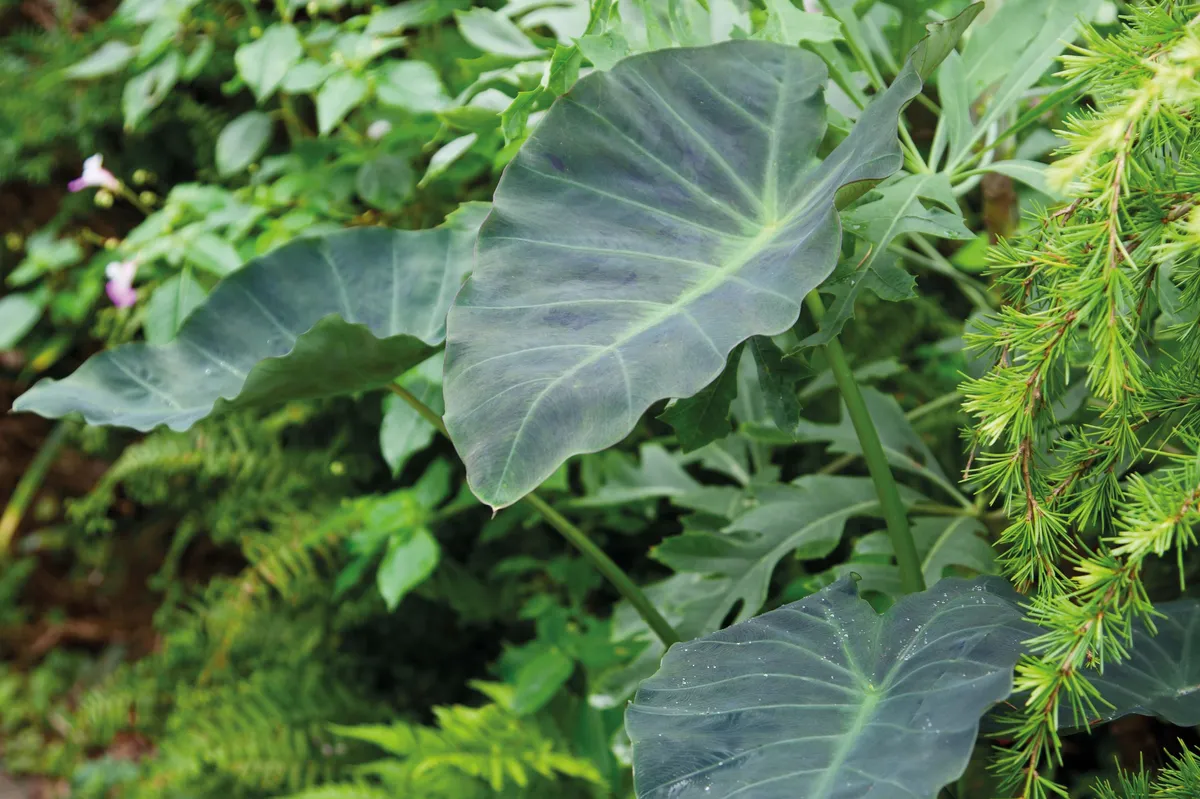
Impressive foliage that is smudged with extraordinary markings in large blotches. Overall impression is of chic, charcoal green with a hypnotic charm. Loves heat and moisture. 1m. USDA 9a-11.
This tamarillo or tree tomato from South America is widely grown for its edible, crimson fruit. Easy from seed, making a sturdy plant in its second year. Happy in sun or part shade. 3m. USDA 10a-11.
Persicaria virginiana ‘Brushstrokes’
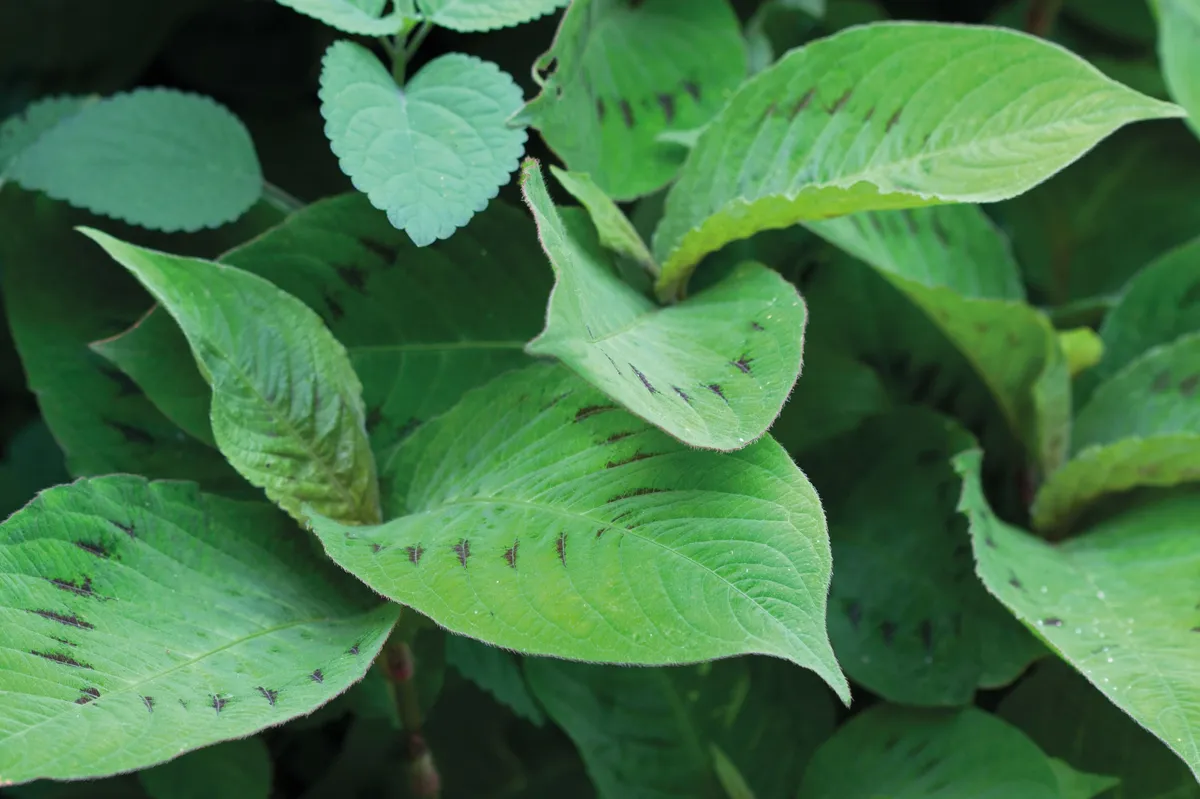
A hardy, clump-forming perennial. The rich-green foliage turns an attractive olive green when stressed. Happy in sun or part-to-deep shade. 60cm. USDA 4a-8b.
Here's more on growing persicaria
Canna ‘General Eisenhower’
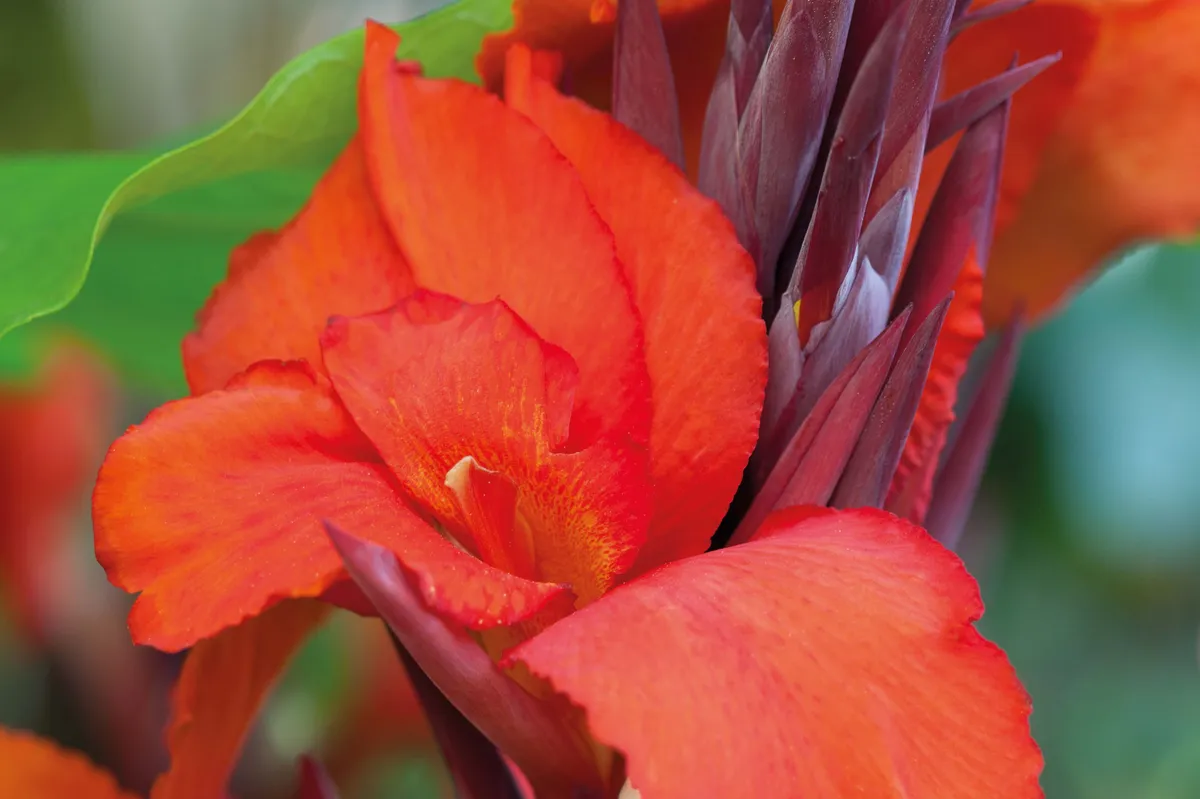
Deep purple from tip to toe with rippling broad muscular leaves. Large, thick-petalled, reddish orange flowers that seem to float above the body like exotic handkerchiefs. 2m. AGM. RHS H3, USDA 9a-11.
Hedychium ‘Helen Dillon’
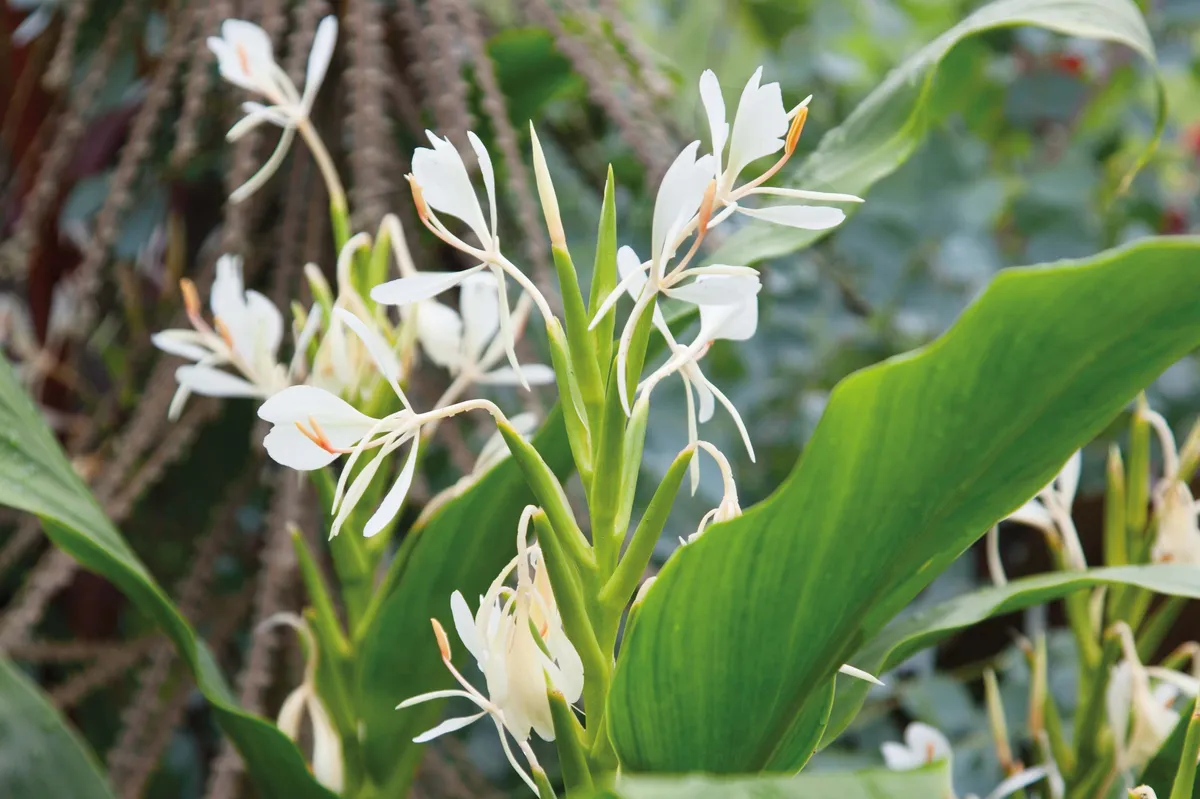
Glossy green leaves, paler on the undersides, and softened with a fine bloom on the young growth. Loose, almost orchid-like, white flowers with a central apricot stamen, appear from late summer. 2m. USDA 7b-11.
Exotic plants with ferny or filigree textures
Eupatorium capillifolium
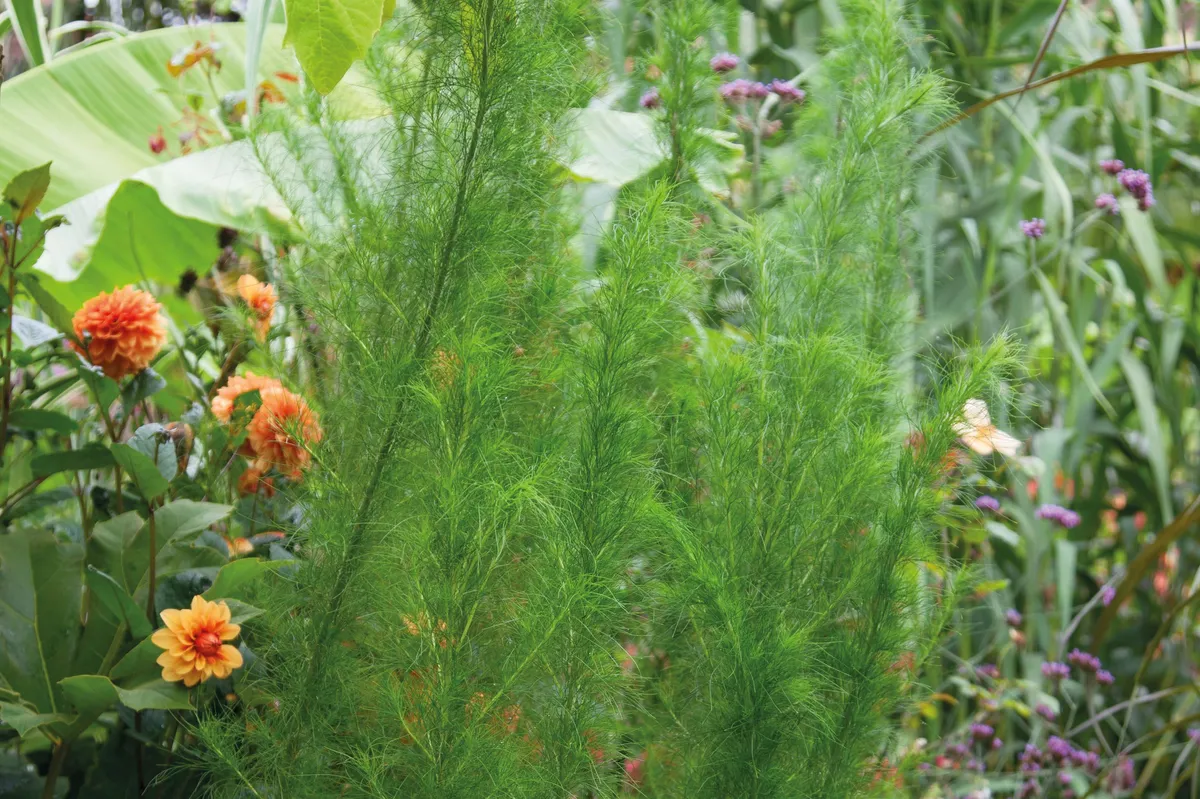
Upright stems covered in a soft filigree of almost threadlike, fresh-green leaves, making a vibrant emerald column late into the summer. Insignificant flowers are greyish white. 2m. AGM. RHS H3, USDA 3a-10a.
Dicksonia antarctica
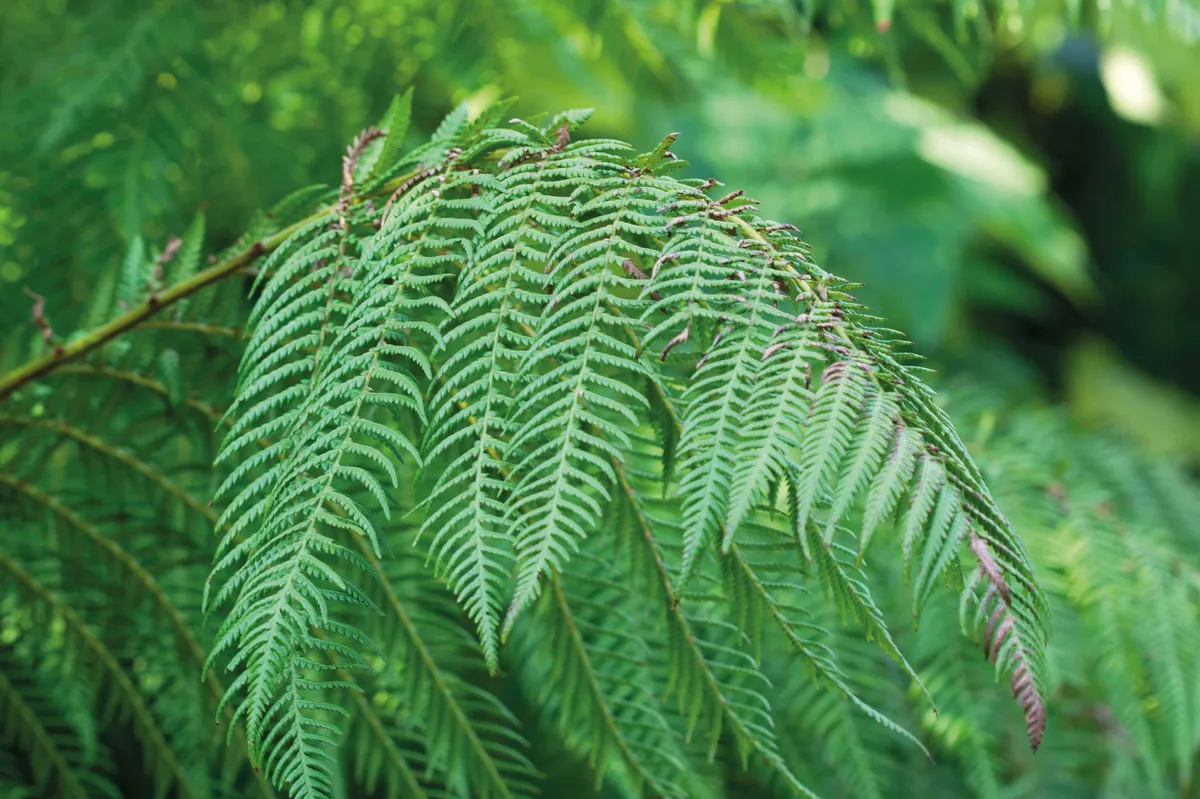
A hairy trunk of the tree fern supports a wide, lacy umbrella of finely divided, fresh green fronds radiating from a central hairy crown. The leaves are borne in flushes unravelling like dainty green sails. 2m. AGM. RHS H3, USDA 9a-10b.
Buy Dicksonia antarctica from Crocus
Larix decidua ‘Horstmann Recurved’
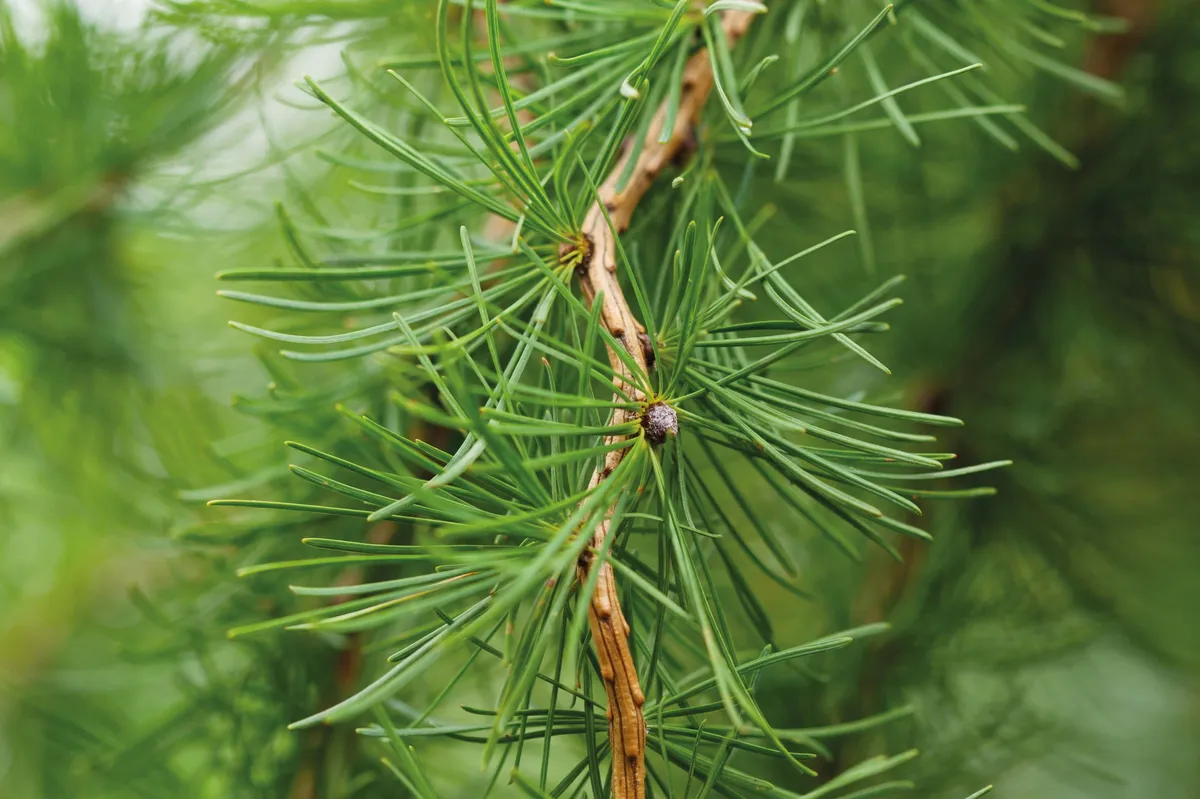
A zany mutant of the European larch with branches twisting as if they’ve been in curlers. Grey-green needles turn golden before falling in autumn. 5m. USDA 2a-8b.
Begonia foliosa var. miniata
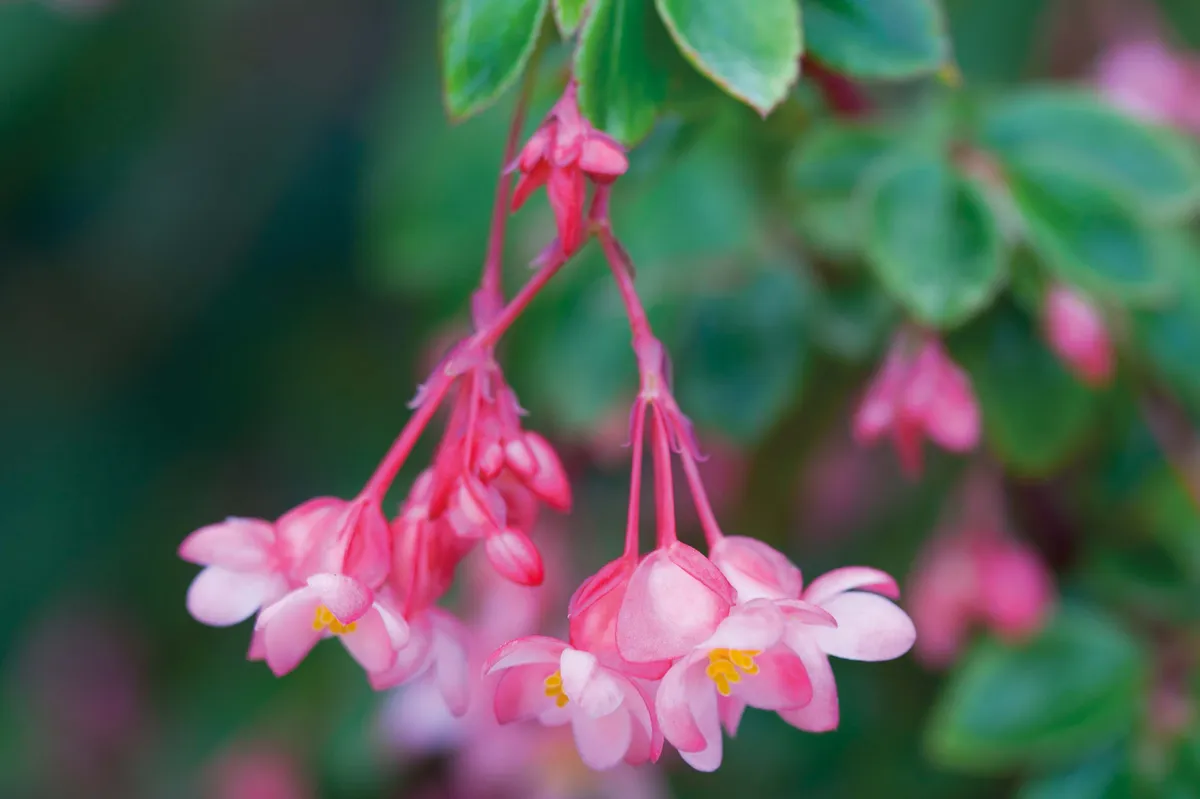
Petite, glossy green, ovate leaves set in layers on upright, slightly arching red-tinged stems. An ungainly yet delicate structure, off which hang clusters of fuchsia-like flowers. 75cm. AGM. RHS H1B, USDA 9a-11.
Dryopteris wallichiana
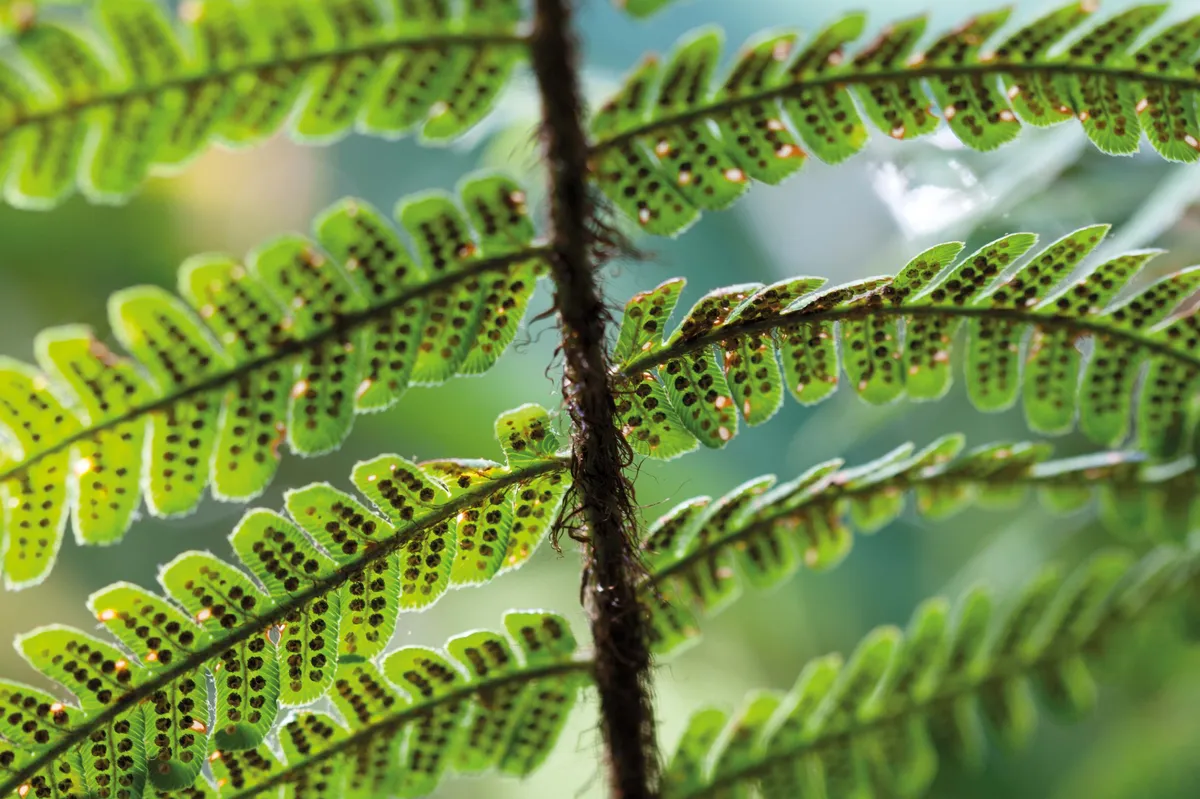
The most reptilian of all hardy ferns. Its tri-pinnate leaves, widest in the middle, have regularly spaced, yellow-green pinnules, contrasting with the charcoal black midrib. 1m. AGM. RHS H5, USDA 5a-10a.
Buy Dryopteris wallichiana from Crocus
Begonia luxurians
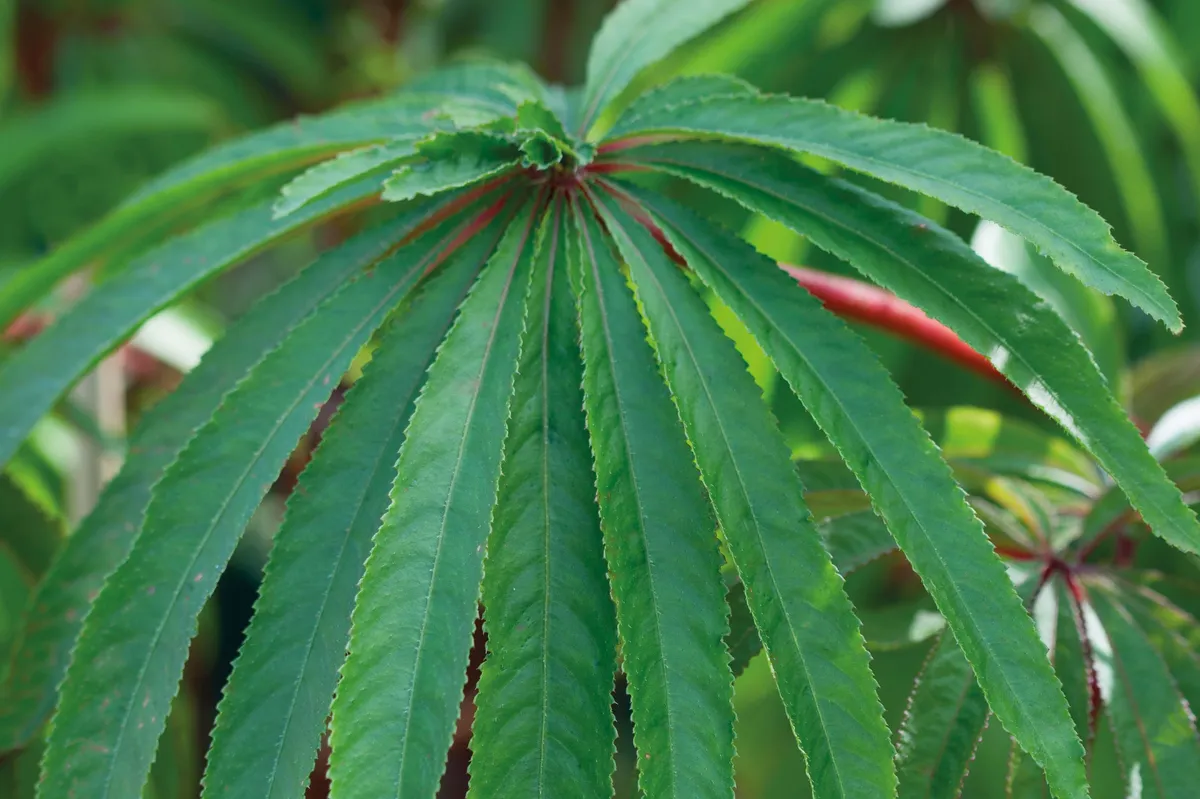
A zig-zag of alternating side branches splay out from reddish canes, supporting large palm-like leaves made up of several drooping leaflets. White flowers are borne in late summer. 2m. AGM. RHS H1B, USDA 9a-11.
Buy Begonia luxurians from Thompson & Morgan
Cyperus papyrus
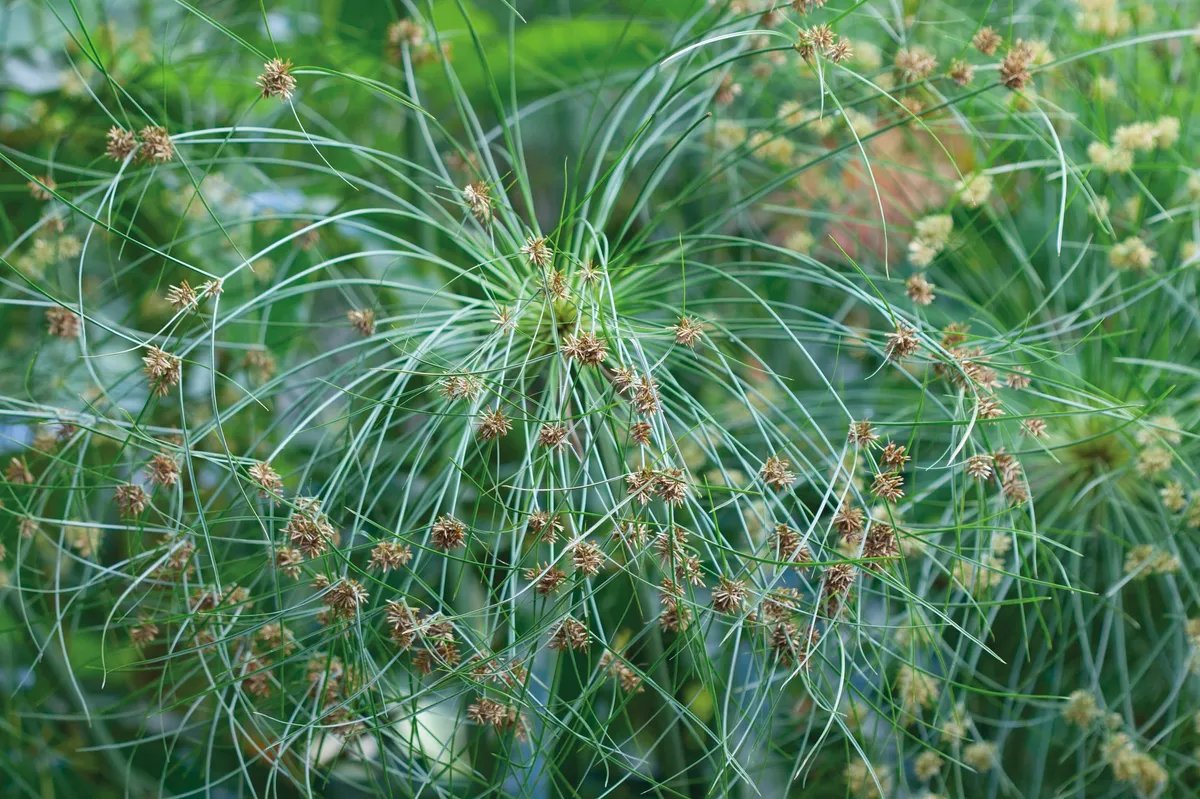
A Dr Seuss plant with triangular stems, on top of which float rounded clusters of long, arching threads, making a pendulous tuft of bright green that end in golden-brown sedge flowers. 2m. AGM. RHS H1A, USDA 9a-10b.
Buy Cyperus papyrus from Thompson & Morgan
Schefflera taiwaniana
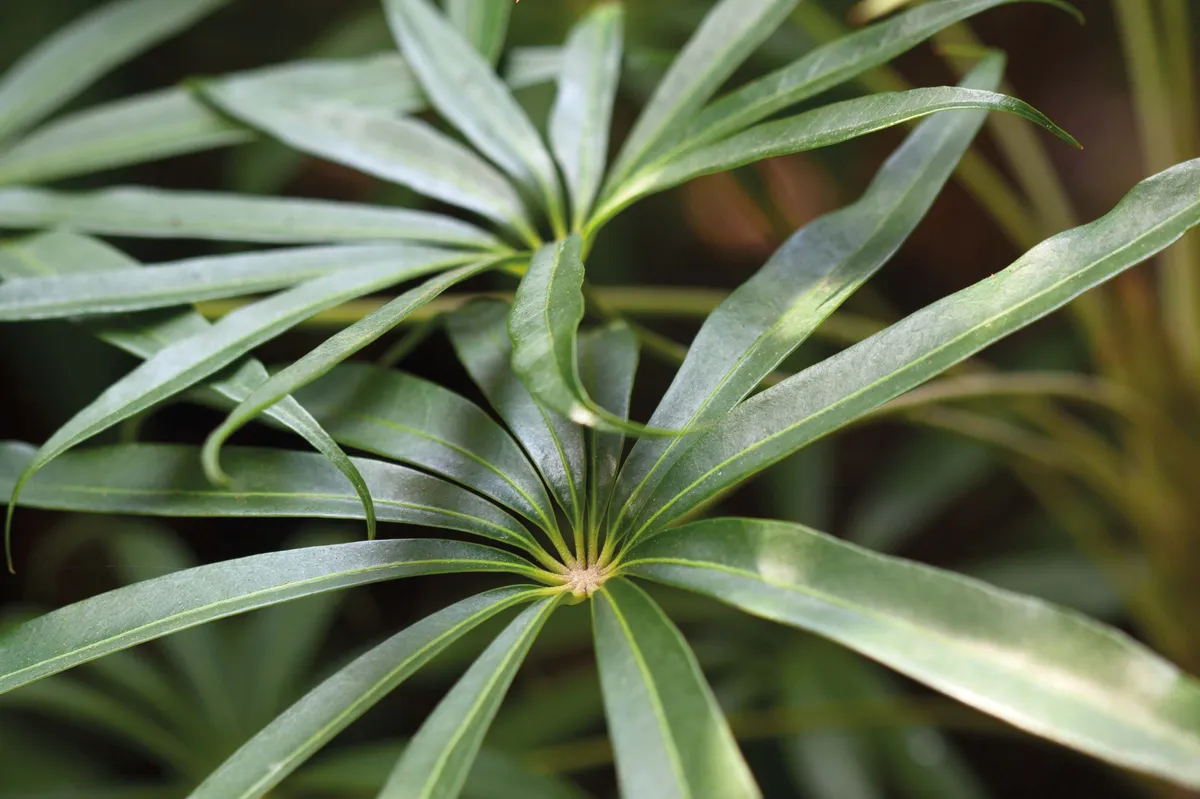
An evergreen, multi-stemmed shrub with parasols of digitate leaves comprising 11 deep-green fingers. White flowers are followed by black fruit. Happy in sun or part shade. 3m. AGM. RHS H4, USDA 9b-10a.
Tagetes lemmonii

Pinnate leaves of up to five leaflets exude a strong aroma. Small, orange-yellow daisy-like flowers are produced throughout the autumn into winter. Provides an excellent contrast to bolder foliage. 2m. USDA 8a-11.
Tagetes lemmonii ‘Martin’s Mutant’
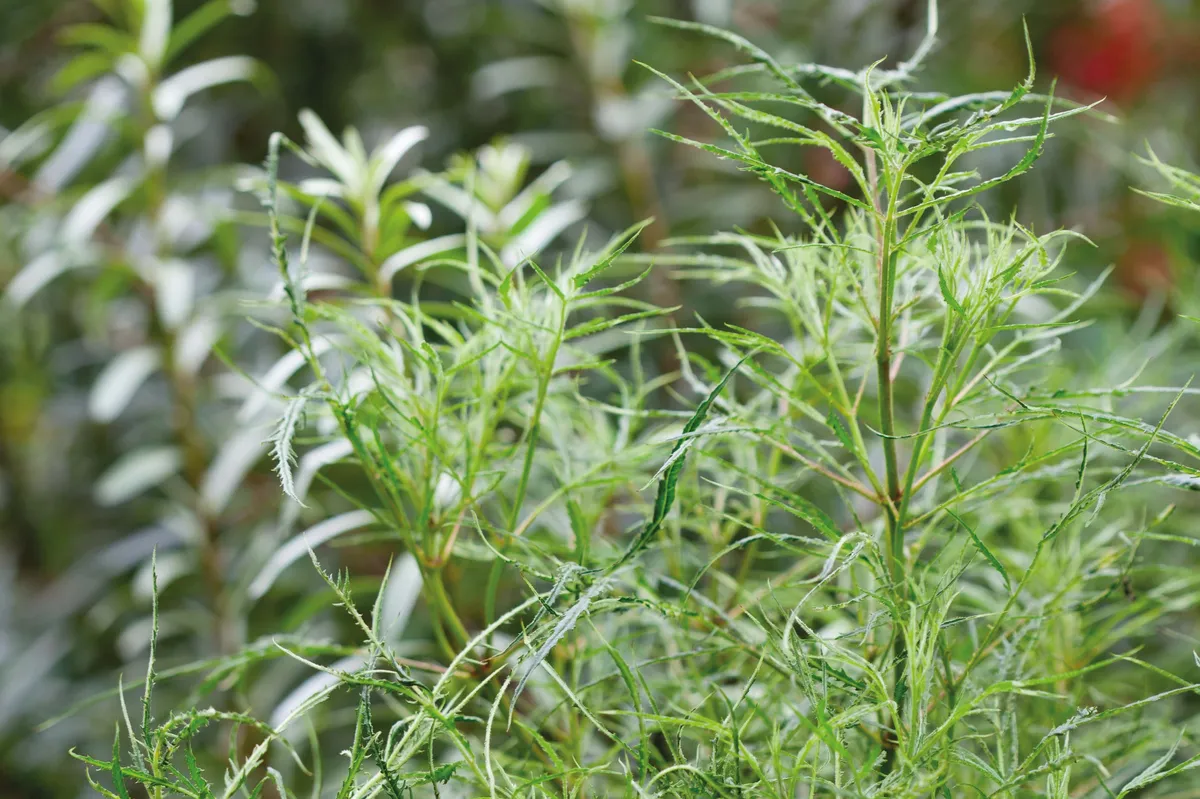
Its puckered, feathery, grey foliage, makes this an exceptionally handsome filigree bush. Weaker in growth than its parent, but valuable thanks to its billowy texture. Likes sun or part shade. 1m. USDA 8a-11.
Quirky and unusual shaped exotic plants
Amicia zygomeris
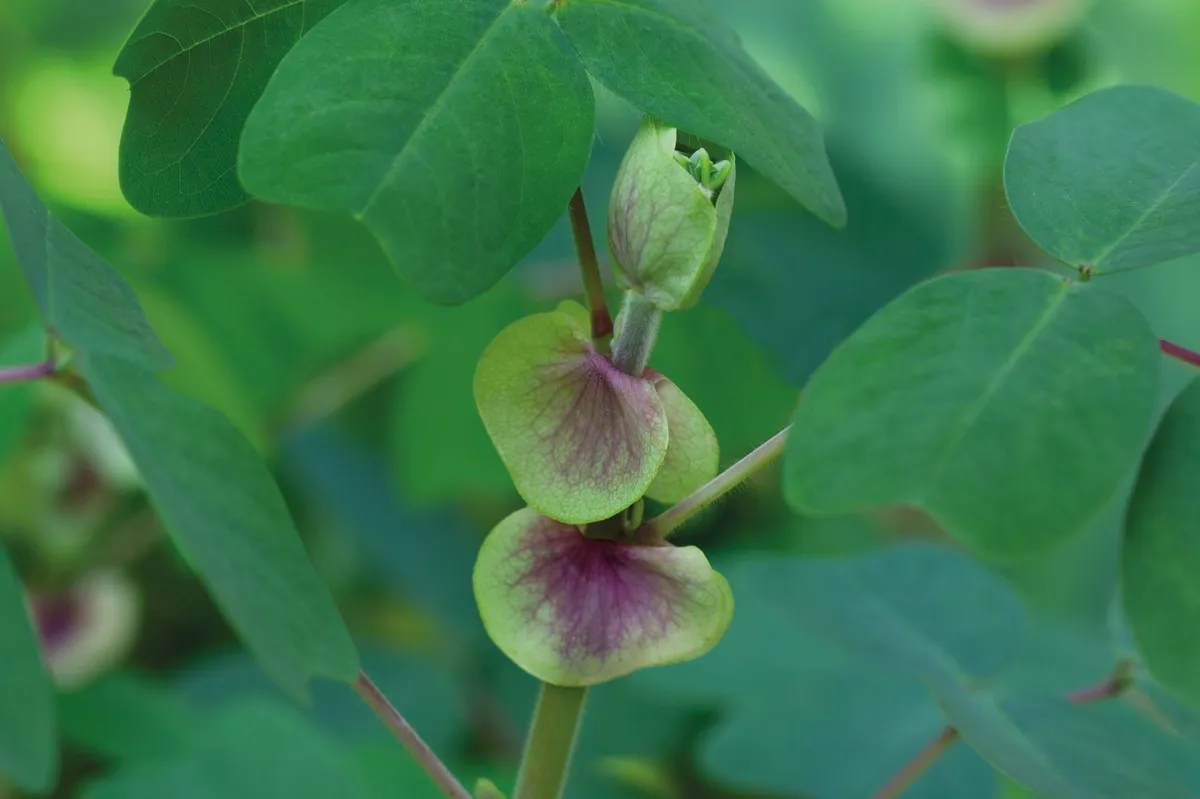
A Mexican curiosity with multiple stems, clasped at intervals by purple-stained stipules. Alternating leaves made up of four pinnate leaflets, which shut at night, are held at right angles. 2.5m. RHS H4, USDA 7b-9b.
Cussonia paniculata
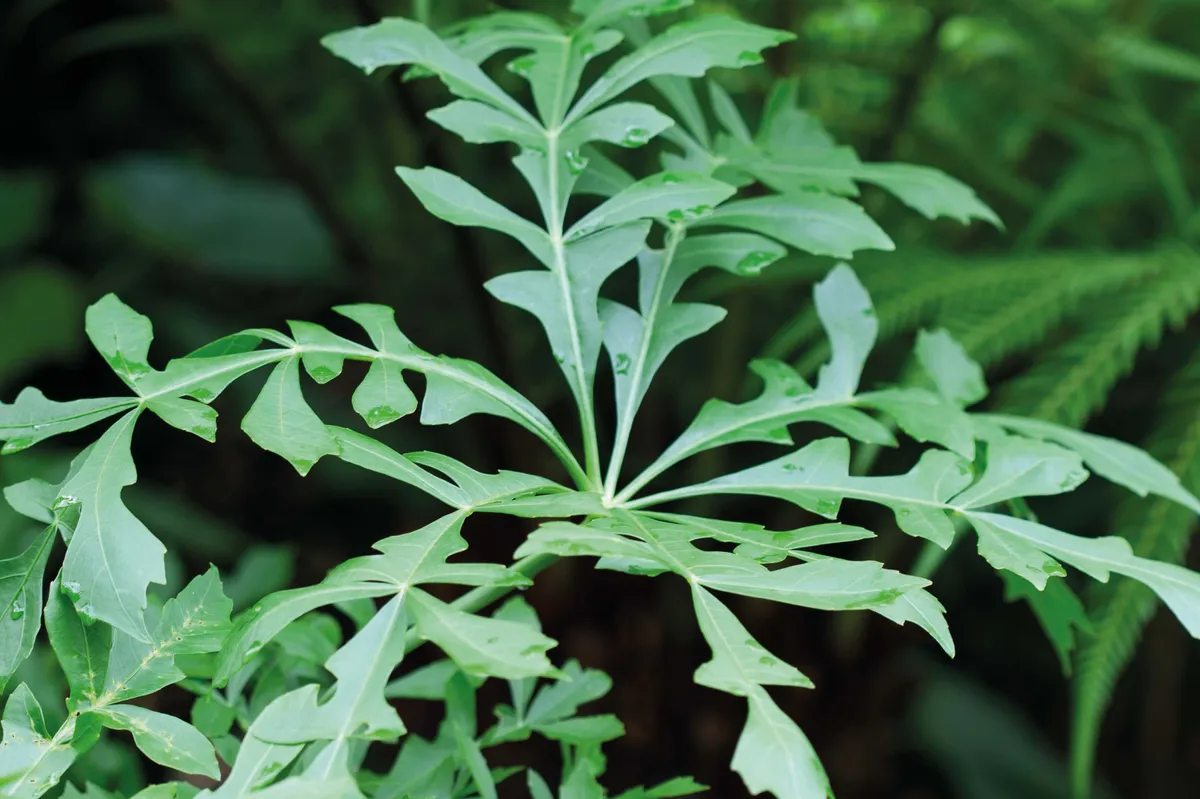
A distinctive pachycaul succulent known as the mountain cabbage tree. It has glaucous-blue leaves made up of many leaflets that give the impression of a grey-blue spider’s web carried on top of a singular woody stem. 5m. USDA 9a-11.
Cryptomeria japonica Araucarioides Group
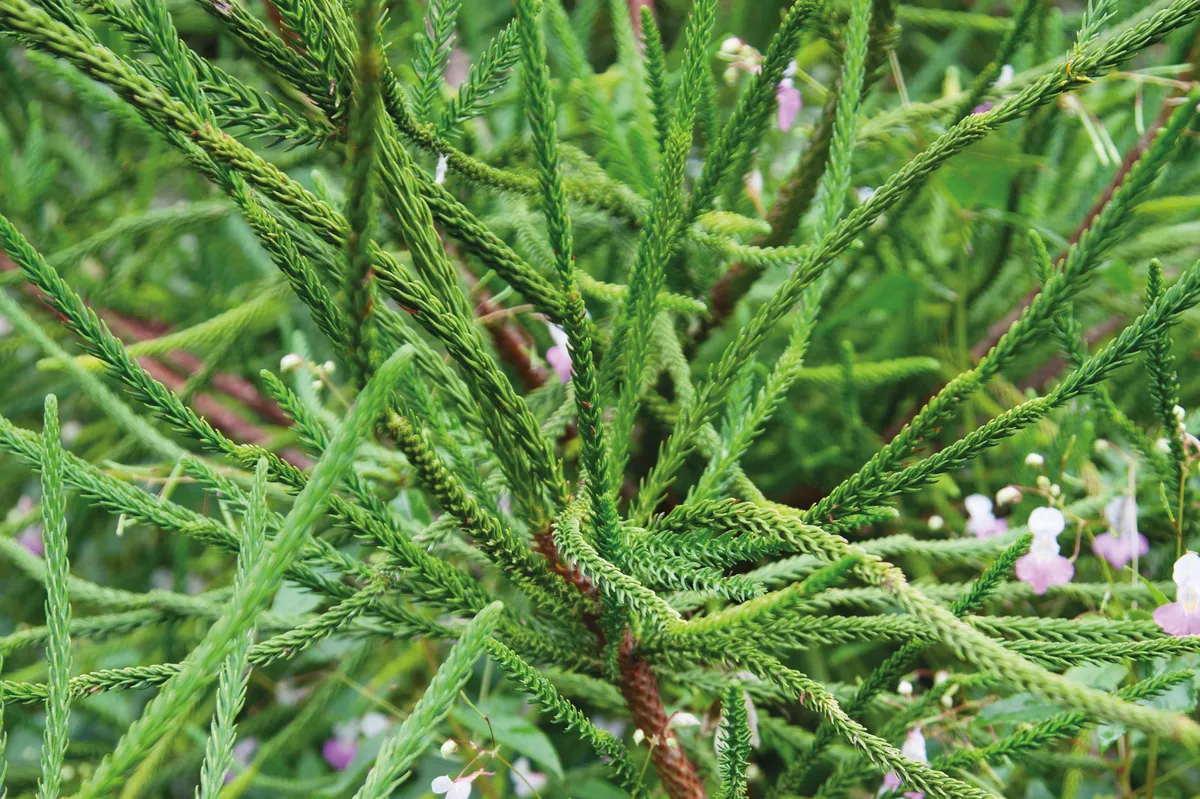
An irregular, zany conifer, with whip-like branches scaled in adpressed, dark-green needles, resulting in stems that have a rope-like appearance. 2.5m. USDA 6a-8b.
Pseudopanax ferox
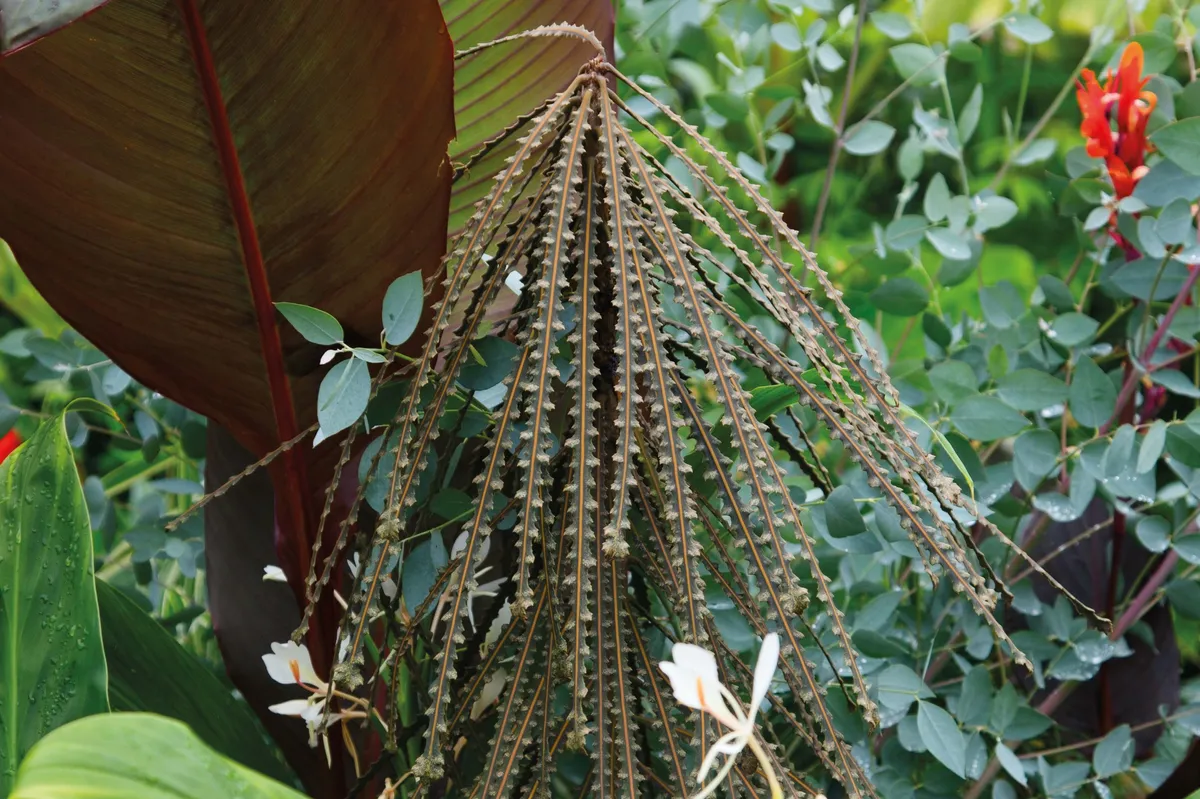
An unusual plant with saw-toothed, grey-brown, evergreen leaves, which hang, sweeping down, around a deep-grooved stem. As they mature, the leaves get broader shorter and greener. 4m. USDA 8b-10b.
Acacia pravissima
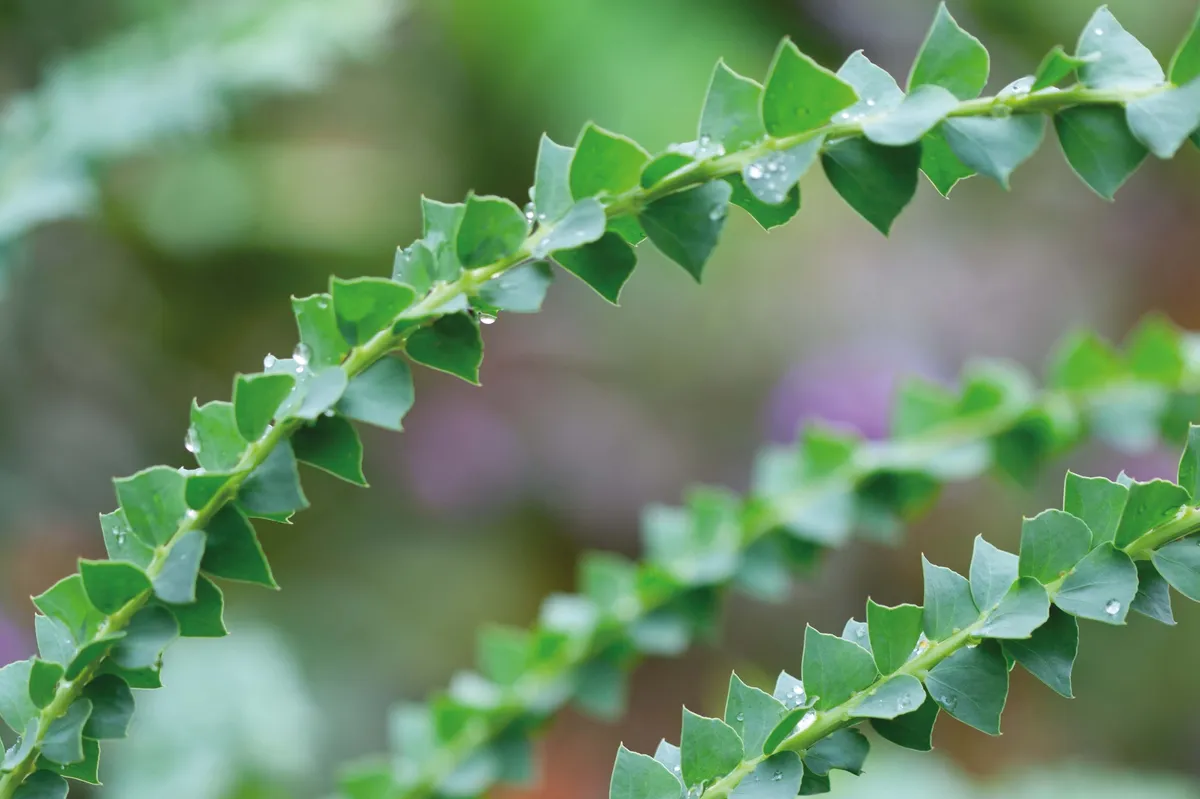
A dainty, evergreen tree, with lightly arching stems decorated in triangular, alternating glaucous phyllodes that sit at right angles to each other, giving a prickly appearance. 5m. AGM. RHS H3, USDA 8a-10b.
Trevesia palmata
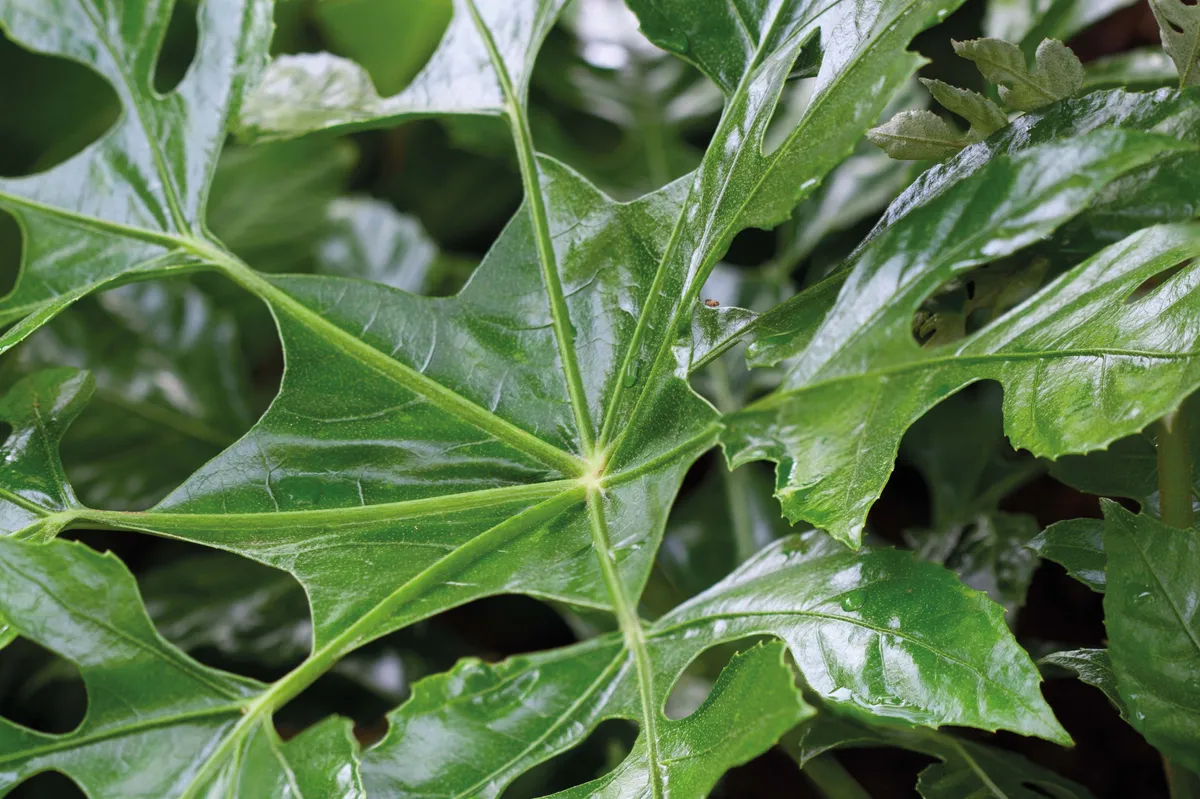
Known as the snowflake tree because of its deeply lobed leaves that resemble a large snowflake. Looks almost prehistoric when its young unfurling shoots are covered with silver tomentum. 3m. USDA 9b-11.
Manihot grahamii
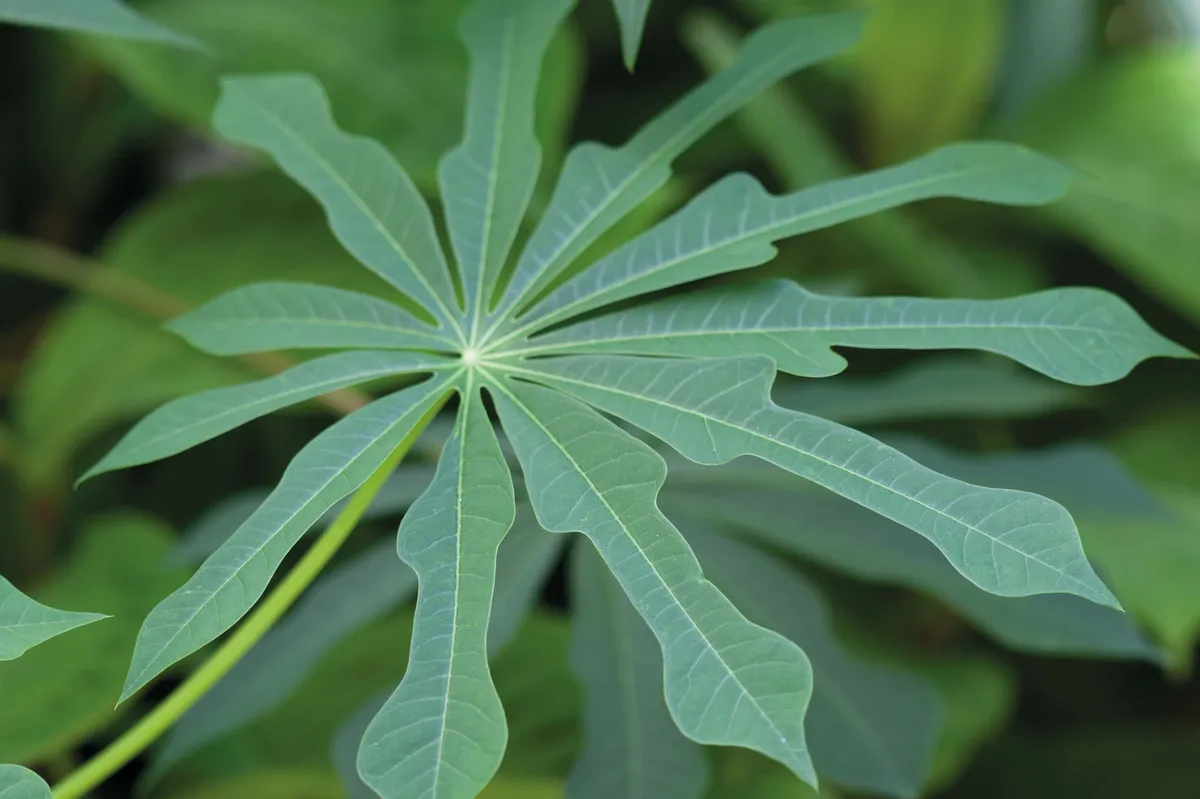
Extraordinary foliage plant layered with enormous, lobed, deeply indented palmate leaves resulting in noteworthy negative space. Flowers are muted, greenish-yellow bells. 3m. USDA 9b-11.
Dahlia imperialis
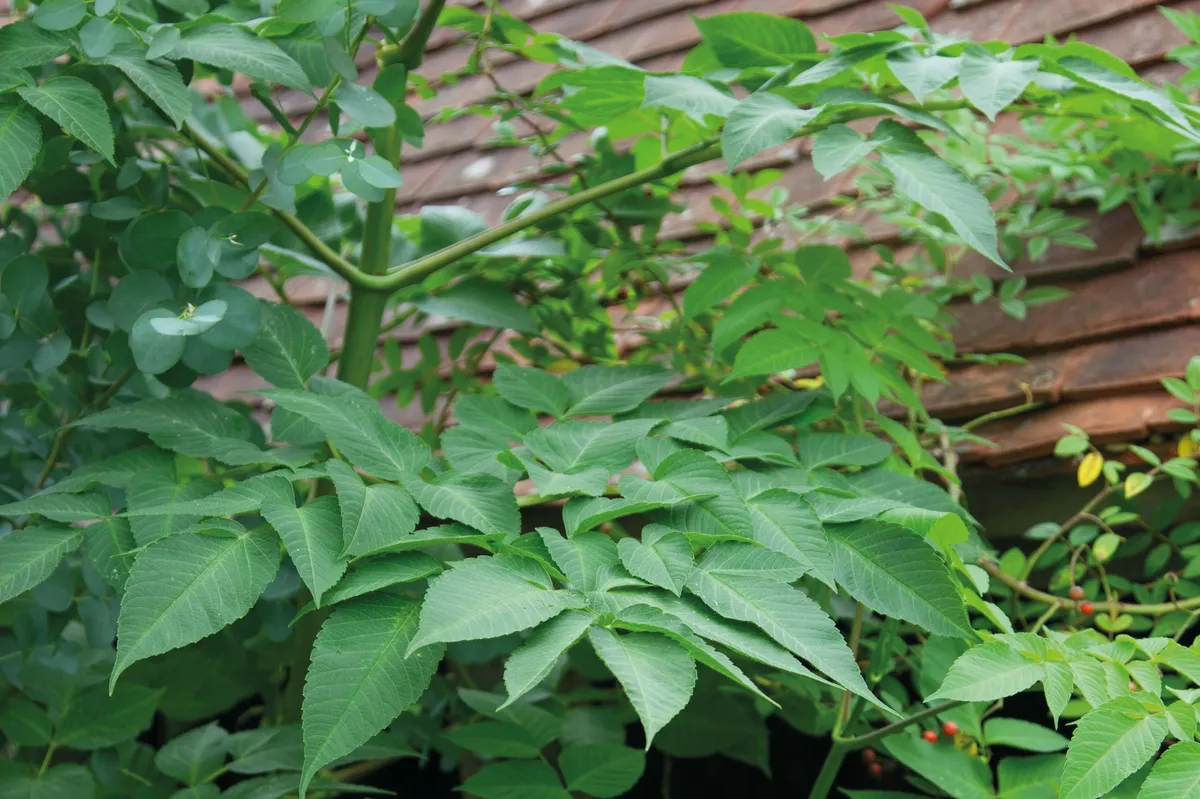
The tree dahlia is a giant, with stems as thick as scaffolding poles and immense tri-pinnate leaves over 1m long and wide. Frost free, it flowers all winter long from October with single pink blooms. 8m. USDA 7a-9b.
Buy Dahlia imperialis from Crocus
Here's how to grow dahlias
Begonia metallica
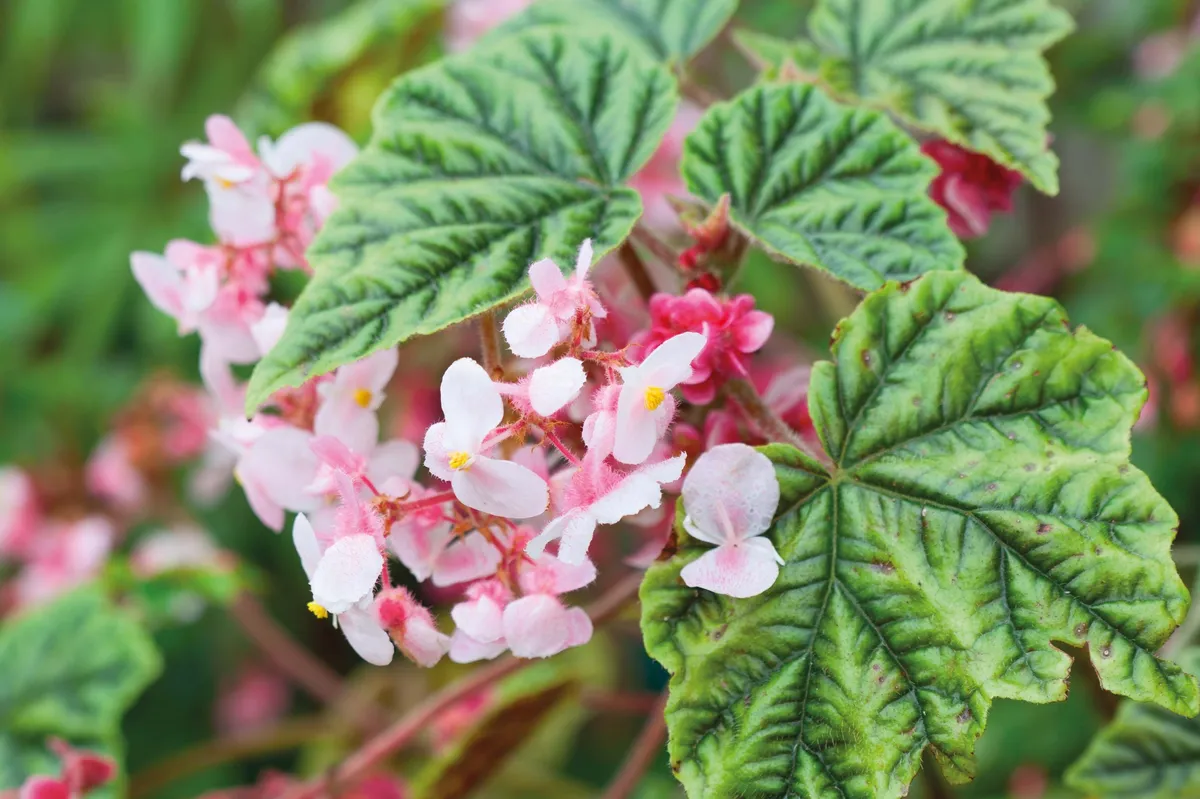
Deep-veined, asymmetrical leaves are olive green with undersides of pinkish red. The flowers are pale pink and in large clusters. Lights up the darkest corners with its heavy gloss. 60cm. AGM. USDA 10a-11.
Buy Begonia metallica from Thompson & Morgan
Saccharum officinarum var. violaceum
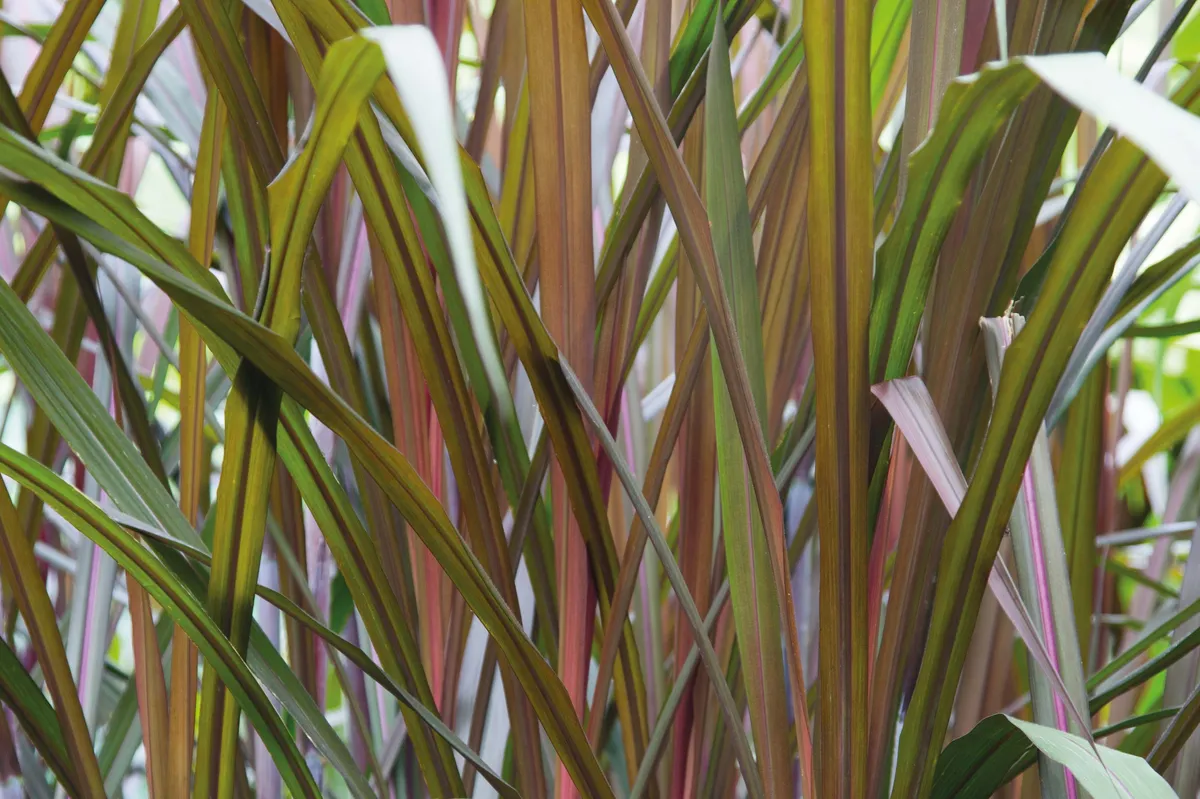
Upright stems have strong, keeled leaves, which create a fountain of burgundy and silver that moves and rustles in the wind. Comes alive when backlit. 3m. USDA 8a-10b.
How to protect exotic plants in winter
Not all exotic plants need to be moved to a snug greenhouse kept hot and humid throughout the winter. Hardy plants, such as paulownias, eucalyptus, Schefflera taiwaniana, Persicaria virginiana ‘Brushstrokes’, Amicia zygomeris and Dryopteris wallichiana, stay out all year round. Some, such as Hedychium ‘Helen Dillon’, can remain out if protected by heavy mulch. At Dixter we wrap the trunk of the hardy Japanese banana tree Musa basjoo in a thick layer of fern fronds, which are held in place with bamboo canes (if fern fronds are scarce then straw or hay will do). Some plants simply need a frost-free shelter.
Cannas and dahlias can be stored dormant in a dark cellar or garage. The soil cleaned off their roots and packed into crates with a bit of sawdust or bark, they can sit here all winter long – only to be split and potted up into fresh compost the following spring (don’t split in autumn or the tubers may rot). The begonias, manihots, trevesias, cyperus, saccharums and colocasias go into a warmer environment – a hothouse or conservatory with minimum winter temperature of 10ºC. They are kept growing, regularly watered and well ventilated to keep good air circulation (keeping down diseases). A drier cooler house where temperatures are at a winter low of 5ºC, holds many of the cacti and succulents, including cussonias. There is little watering here as many of these plants shut off for the winter. Again good ventilation is vital.
Where to buy exotic plants
• Architectural Plants, Tel 01798 879213, architecturalplants.com
• Crûg Farm Plants, Tel 01248 670232, crug-farm.co.uk
• Hardy Exotics Nursery, Tel 01736 740660, hardyexotics.co.uk
• Pan-Global Plants, Tel 01452 741641, panglobalplants.com
Where to see exotic plants
Whether it’s North America’s Sonoran Desert or the dripping rainforests of Costa Rica, the wild is the best place to see exotic plants, but here are some of the best gardens to find them in captivity.
• Botanicactus, 07640 Ses Salines, Mallorca, Spain.Tel +34 619 119 676, botanicactus.comOne of Europe’s largest botanic gardens with extensive plantings of cacti and Mediterranean plants.
• Chanticleer, 786 Church Road Wayne, PA 19087, USA.Tel +1 610 687 4163, chanticleergarden.orgDan Benarcik has tended the courtyard garden here over a number of years with an emphasis on tropicals and subtropicals.
• Cotswold Wildlife Park and Gardens, Cotswold Wildlife Park, Bradwell Grove, Burford, Oxfordshire OX18 4JP.Tel 01993 823006, cotswoldwildlifepark.co.ukTim Miles’s displays are always colourful, and perfectly put together.
• The Desert Garden, The Huntington Library, Art Collections and Botanical Gardens, 1151 Oxford Road, San Marino, CA 91108, USA.Tel +1 610 687 4163, huntington.orgOne of the largest collections of cacti and succulents in the world.
• Dino Pellizzaro’s Nursery, 290 Chemin Leouse, 06220 Vallauris, France.Tel +33 (0)4 93 64 18 43.Situated up a steep slope, this little treasure is open only by appointment. Dino is one of the most charismatic and knowledgeable plantsmen in the world today.
• Palm House, Kew, Royal Botanic Gardens, Kew, Richmond, Surrey TW9 3AB.Tel 020 8332 5655, kew.orgAn afternoon in here really does take you to the tropics. The structure itself is something to be marvelled, let alone the wonderful collection of plants from all over the world.
